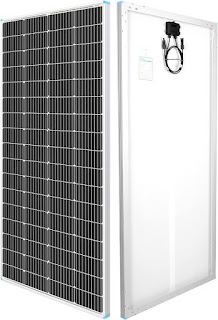Solar Installation and Pricing: Everything You Need to Know?
Introduction
Why Go Solar?
Before diving into the specifics of solar installation and costs, it's important to understand the numerous benefits of going solar.
Environmental Impact
Solar power is a clean, renewable energy source that reduces our reliance on fossil fuels. By installing solar panels, you can significantly lower your carbon footprint and contribute to a healthier planet.
Financial Savings
While the initial investment in solar panels can be significant, the long-term savings on your energy bills are substantial. Many homeowners and businesses see a return on investment within a few years.
Energy Independence
Solar power provides energy independence. You become less reliant on the grid and protected against rising energy costs. In some cases, you might even generate excess power that can be sold back to the grid.
Understanding Solar Installation
Types of Solar Panels
1 : Monocrystalline Solar Panels
Efficiency:
High efficiency and performance in low-light conditions.
Lifespan:
Long-lasting, often with warranties of 25 years or more.
Cost:
Generally more expensive than other types.
2 : Polycrystalline Solar Panels
Efficiency:
Slightly less efficient than monocrystalline panels.
Lifespan:
Durable with a long lifespan.
Cost:
More affordable than monocrystalline panels.
3 : Thin-Film Solar Panels
Efficiency:
Lower efficiency compared to crystalline panels.
Lifespan:
Typically shorter lifespan.
Cost:
Generally the least expensive option.
Components of a Solar Power System:
1 : Solar Panels
Capture sunlight and convert it into electricity.
2 : Inverter
Converts the DC electricity generated by the panels into AC electricity used by most household appliances.
3. Mounting System
Secures the panels to your roof or ground.
4. Battery Storage (Optional)
Stores excess energy for use when the sun isn't shining.
5. Monitoring System
Tracks the performance and output of your solar power system.
Installation Process
1. Site Assessment
A professional evaluates your property to determine the best location for the panels and the optimal system size.
2. Design and Permitting
A customized system design is created, and the necessary permits are obtained from local authorities.
3. Installation
Solar panels, inverters, and other components are installed by a professional team.
4. Inspection and Connection
The system is inspected to ensure it meets all safety and regulatory standards, then connected to the grid.
5. Activation
Once approved, your solar power system is activated, and you begin generating clean energy.
Cost of Solar Installation
Factors Influencing the Cost
1. System Size
Larger systems generate more power but come with higher costs.
2. Type of Panels
Monocrystalline panels are more expensive but more efficient. Polycrystalline and thin-film panels are cheaper but less efficient
3. Location
Installation costs can vary based on regional labor rates and local permitting fees.
4. Roof Condition
Older roofs may require reinforcement or repairs before solar panels can be installed.
5. Incentives and Rebates
Federal, state, and local incentives can significantly reduce the overall cost of installation.
Average Costs
Residential Systems:
The average cost for a residential solar system ranges from $15,000 to $25,000 before incentives. After incentives, the cost can drop to $10,000 to $20,000.
Commercial Systems:
Commercial installations are typically larger and can range from $50,000 to $200,000 or more, depending on the size and complexity of the system.
Financing Options
1. Purchase
Paying upfront provides the highest return on investment and allows you to take full advantage of tax credits and incentives.
2. Solar Loans
Loans allow you to spread the cost over time. Monthly payments are often lower than your previous utility bills, leading to immediate savings.
3. Solar Leases and Power Purchase Agreements (PPAs)
These options allow you to install solar panels with little to no upfront cost. You pay a fixed monthly fee (lease) or pay for the power generated (PPA).
Incentives and Rebates
1. Federal Tax Credit
The Federal Solar Investment Tax Credit (ITC) allows you to deduct a significant portion of your solar installation costs from your federal taxes.
2. State and Local Incentives
Many states and municipalities offer additional incentives, rebates, and tax credits to further reduce the cost.
3. Net Metering
Net metering programs allow you to sell excess electricity back to the grid, earning credits on your energy bill.
Choosing a Solar Installer
Research and Reviews
Look for installers with strong reviews and a proven track record. - Check for certifications from reputable organizations like the North American Board of Certified Energy Practitioners (NABCEP).
Get Multiple Quotes
Obtain quotes from at least three different installers to compare costs and services.
Ask the Right Questions
Inquire about warranties, maintenance services, and the installer’s experience with similar projects.
Conclusion
Switching to solar power is a smart investment for both your wallet and the planet. Understanding the basics of solar installation and pricing can help you make an informed decision and find the best solution for your energy needs. With numerous financing options and incentives available, there's never been a better time to go solar. Take the first step towards energy independence and environmental sustainability today. By harnessing the power of the sun, you’re not only saving money but also contributing to a greener future. Solar energy is a reliable, renewable resource that can transform your home or business, offering substantial long-term benefits. Start your solar journey now and enjoy the rewards for years to come.









No comments:
Post a Comment